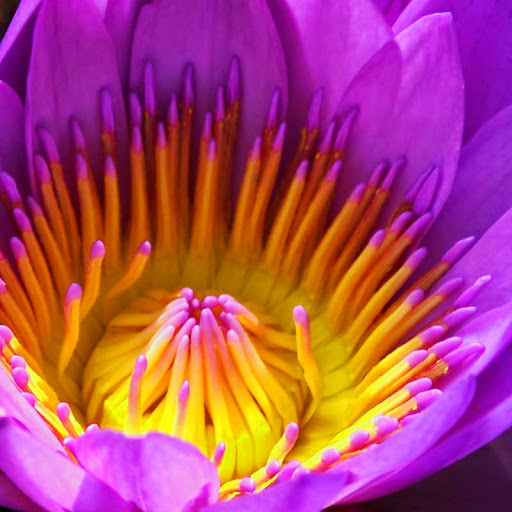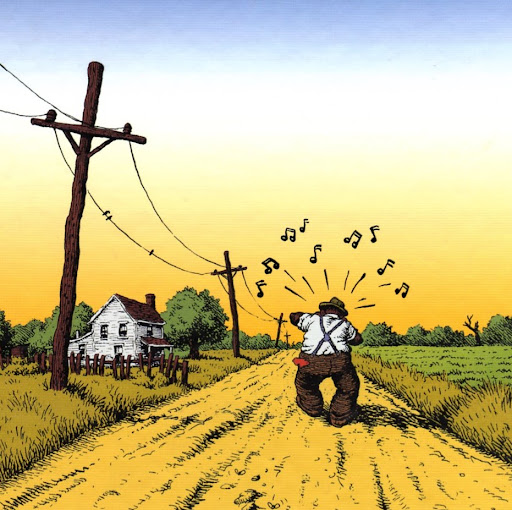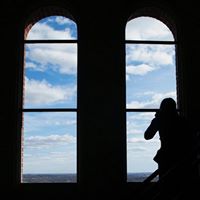Qiang Fu
age ~45
from Painted Post, NY
Qiang Fu Phones & Addresses
- 7 Tara Pl, Painted Post, NY 14870
- Albany, CA
- Rolla, MO
Work
-
Company:Lawrence berkeley national laboratorySep 2009
-
Position:Postdoctoral fellow
Education
-
School / High School:Missouri University of Science and Technology- Rolla, MOAug 2005
-
Specialities:Ph.D of Ceramic Engineering
Us Patents
-
Controlled Porosity In Electrodes
view source -
US Patent:20120315538, Dec 13, 2012
-
Filed:Apr 9, 2012
-
Appl. No.:13/442589
-
Inventors:Yet-Ming Chiang - Framingham MA, US
Chang-Jun Bae - Palo Alto CA, US
John William Halloran - Ann Arbor MI, US
Qiang Fu - Albany CA, US
Antoni P. Tomsia - Pinole CA, US
Can K. Erdonmez - Miller Place NY, US -
Assignee:Massachusetts Instituteof Technology - Cambridge MA
The Regents of the University of Michigan - Ann Arbor MI
Lawrence Berkeley Laboratory - Berkeley CA -
International Classification:H01M 4/02
B28B 1/50 -
US Classification:429209, 264 49, 264154, 264 42, 264 43
-
Abstract:Porous electrodes in which the porosity has a low tortuosity are generally provided. In some embodiments, the porous electrodes can be designed to be filled with electrolyte and used in batteries, and can include low tortuosity in the primary direction of ion transport during charge and discharge of the battery. In some embodiments, the electrodes can have a high volume fraction of electrode active material (i.e., low porosity). The attributes outlined above can allow the electrodes to be fabricated with a higher energy density, higher capacity per unit area of electrode (mAh/cm), and greater thickness than comparable electrodes while still providing high utilization of the active material in the battery during use. Accordingly, the electrodes can be used to produce batteries with high energy densities, high power, or both compared to batteries using electrodes of conventional design with relatively highly tortuous pores.
-
Precursor Glasses And Transparent Glass-Ceramic Articles Formed Therefrom And Having Improved Mechanical Durability
view source -
US Patent:20220411319, Dec 29, 2022
-
Filed:Jun 16, 2022
-
Appl. No.:17/841757
-
Inventors:- CORNING NY, US
Qiang Fu - Painted Post NY, US
Charlene Marie Smith - Corning NY, US
Alana Marie Whittier - Painted Post NY, US -
International Classification:C03C 10/00
-
Abstract:A glass-ceramic article includes from 60 mol % to 72 mol % SiO2; from 2.5 mol % to 8 mol % AlO; from 17 mol % to 26 mol % LiO; from 0.2 mol % to 4 mol % ZrO; and from 0.5 mol % to 2 mol % PO. The sum of alkaline earth oxides and transitional metal oxides in the glass-ceramic article may be from 0.1 mol % to 6 mol %, wherein alkaline earth oxides is the sum of CaO, MgO, SrO, and BaO and transition metal oxides is the sum of LaO, YO, TaO, and GeO. The sum of POand ZrOin the glass-ceramic article may be from 1 mol % to 6 mol %. The glass-ceramic article may comprise a crystalline phase comprising lithium disilicate and petalite. The total amount of lithium disilicate and petalite in the crystalline phase of the glass-ceramic article may be greater than 50 wt %, based on a total weight of the crystalline phase.
-
Precursor Glasses And Transparent Glass-Ceramic Articles Formed Therefrom And Having Improved Mechanical Durability
view source -
US Patent:20220402809, Dec 22, 2022
-
Filed:Jun 14, 2022
-
Appl. No.:17/839776
-
Inventors:- Corning NY, US
Qiang Fu - Painted Post NY, US
Charlene Marie Smith - Corning NY, US
Alana Marie Whittier - Painted Post NY, US -
International Classification:C03C 10/00
C03B 32/02
C03C 21/00 -
Abstract:A glass-ceramic article includes a crystalline phase; a residual glass phase; greater than or equal to 52 mol % and less than or equal to 70 mol % SiO, greater than or equal to 14 mol % and less than or equal to 35 mol % LiO, greater than or equal to 0.1 mol % and less than or equal to 15 mol % CaO, greater than or equal to 0.5 mol % and less than or equal to 10 mol % ZrO; and greater than or equal to 0.5 mol % and less than or equal to 5 mol % PO.
-
Colored Glass-Ceramics Having Petalite And Lithium Silicate Structures
view source -
US Patent:20220356111, Nov 10, 2022
-
Filed:Jul 14, 2022
-
Appl. No.:17/864693
-
Inventors:- Corning NY, US
Qiang Fu - Painted Post NY, US
Charlene Marie Smith - Corning NY, US -
International Classification:C03C 10/00
C03C 1/04
C03C 4/02 -
Abstract:A glass-ceramic article comprises a petalite crystalline phase and a lithium silicate crystalline phase. The weight percentage of each of the petalite crystalline phase and the lithium silicate crystalline phase in the glass-ceramic article are greater than each of the weight percentages of other crystalline phases present in the glass-ceramic article. The glass-ceramic article has a transmittance color coordinate in the CIELAB color space of: L*=from 20 to 90; a*=from −20 to 40; and b*=from −60 to 60 for a CIE illuminant F02 under SCI UVC conditions. In some embodiments, the colorant is selected from the group consisting of TiO, FeO, NiO, CoO, MnO, CrO, CuO, Au, Ag, and VO.
-
Salt Bath Compositions And Methods For Regenerating Salt Bath Compositions
view source -
US Patent:20220348496, Nov 3, 2022
-
Filed:Sep 10, 2020
-
Appl. No.:17/642432
-
Inventors:- CORNING NY, US
Albert Joseph Fahey - Corning NY, US
Qiang Fu - Painted Post NY, US
Yuhui Jin - Painted Post NY, US
Wei Sun - Painted Post NY, US
Ljerka Ukrainczyk - Ithaca NY, US
Shelby Kerin Wilson - Corning NY, US -
International Classification:C03C 21/00
-
Abstract:Methods for regenerating a salt bath composition include heating the salt bath composition to an ion exchange temperature to form a molten salt bath. The methods may further include contacting at least a portion of an ion-exchangeable article that includes lithium oxide (LiO) with the molten salt bath. Lithium cations may diffuse from the ion-exchangeable article and into the molten salt bath. Additionally, the methods may include adding a first phosphate salt to the molten salt bath. A lithium phosphate salt that includes at least a portion of the lithium cations may be formed and precipitate from the molten salt bath. Furthermore, the methods may include adding a multivalent salt that includes a multivalent metal cation to the molten salt bath. A second phosphate salt that includes the multivalent metal cation may be formed and precipitate from the molten salt bath.
-
High Liquidus Viscosity Bioactive Glass
view source -
US Patent:20220298058, Sep 22, 2022
-
Filed:Jun 3, 2022
-
Appl. No.:17/832208
-
Inventors:- CORNING NY, US
Qiang Fu - Painted Post NY, US
John Christopher Mauro - Boalsburg PA, US
Michael Joshua Snyder - Almond NY, US -
International Classification:C03C 3/097
A61K 33/42
C03C 4/00
C03C 13/00 -
Abstract:Methods of making a bioactive glass fiber include forming a melt of a glass composition including: 50 to 70% SiO; 0.1 to 10% AlO, 5 to 30% NaO, 0.1 to 15% KO, 0.1 to 15% MgO, 0.1 to 20% CaO, and 5 to 10% PO, based on a 100 wt % of the glass composition. The melt has a viscosity of from 200 Poise to 2,000 Poise. Methods include drawing the melt into a drawn glass fiber. Bioactive glass compositions include: 60 to 70% SiO; 15 to 30% NaO, 5 to 15% KO, 1 to 10% CaO, and 5 to 10% PO, based on a 100 wt % of the glass composition.
-
Bioactive Glass Compositions
view source -
US Patent:20220274866, Sep 1, 2022
-
Filed:Feb 26, 2021
-
Appl. No.:17/186044
-
Inventors:- Corning NY, US
Qiang Fu - Painted Post NY, US
Aize Li - Painted Post NY, US -
International Classification:C03C 4/00
C03C 3/085 -
Abstract:A silicate-based glass composition includes 15-65 wt. % SiO, 2.5-25 wt. % MgO, 1-30 wt. % PO, and 15-50 wt. % CaO. The glass composition may also include 0-5 wt. % F, and 0-10 wt. % ZrO. The glass composition may also include one of 0-10 wt. % AlO, 0-10 wt. % SrO, and 0-10 wt. % ZnO.
-
Bioactive Glass Compositions
view source -
US Patent:20220220022, Jul 14, 2022
-
Filed:May 14, 2020
-
Appl. No.:17/610175
-
Inventors:- Corning NY, US
Qiang Fu - Painted Post NY, US
Alana Marie Whittier - Painted Post NY, US -
International Classification:C03C 3/097
C03C 12/00
C03C 13/00
C03C 4/00 -
Abstract:A silicate-based glass composition includes: 40-60 wt. % SiO, 0-10 wt. % BO, 0.01-10 wt. % PO, 0-10 wt. % AlO, 0-5 wt. % LiO, 10-30 wt. % NaO, 0.01-15 wt. % KO, 0.01-5 wt. % MgO, 15-30 wt. % CaO, 15-35 wt. % MO, and 15-30 wt. % RO, such that MO is the sum of MgO, CaO, SrO, BeO, and BaO, and RO is the sum of NaO, KO, LiO, RbO, and CsO.
Resumes

Associate Professor
view sourceWork:
Associate Professor
Skills:
Safety Committee
Software
Occupational Health
Occupational Health and Safety
Software
Occupational Health
Occupational Health and Safety

Qiang Fu
view source
Qiang Fu
view source
Qiang (Vivian) Fu
view source
Qiang Fu
view source
Qiang Fu Berkeley, CA
view sourceWork:
Lawrence Berkeley National Laboratory
Sep 2009 to 2000
Postdoctoral Fellow Missouri S&T
Rolla, MO
Aug 2005 to Aug 2009
Research Assistant Semiconductor Manufacturing International Corporation
Aug 2004 to Aug 2005
Process Engineer Tongji University, Shanghai, China
Sep 2001 to May 2004
Research Assistant
Sep 2009 to 2000
Postdoctoral Fellow Missouri S&T
Rolla, MO
Aug 2005 to Aug 2009
Research Assistant Semiconductor Manufacturing International Corporation
Aug 2004 to Aug 2005
Process Engineer Tongji University, Shanghai, China
Sep 2001 to May 2004
Research Assistant
Education:
Missouri University of Science and Technology
Rolla, MO
Aug 2005 to Aug 2009
Ph.D of Ceramic Engineering Tongji University
Sep 2001 to Apr 2004
Master of Materials Science in P.R. China Tongji University
Sep 1997 to Jul 2001
Bachelor of Materials Science in P.R. China
Rolla, MO
Aug 2005 to Aug 2009
Ph.D of Ceramic Engineering Tongji University
Sep 2001 to Apr 2004
Master of Materials Science in P.R. China Tongji University
Sep 1997 to Jul 2001
Bachelor of Materials Science in P.R. China
Name / Title
Company / Classification
Phones & Addresses
President
Physicians Medical Billing Solutions
Henry Leads. Inc.. PMB Solutions
Medical Billing Services. Billing Companies. Medical Business Administrators. Medical Coding. Medical Consultants
Henry Leads. Inc.. PMB Solutions
Medical Billing Services. Billing Companies. Medical Business Administrators. Medical Coding. Medical Consultants
1777 Fordham Blvd, Suite 104, Chapel Hill, NC 27514-5810
(919)3382699, (866)3623971
(919)3382699, (866)3623971
Isbn (Books And Publications)

Das Dao Von Lao Zi Im Philologischen Vergleich Mit Deutschen Ubersetzungen
view sourceAuthor
Qiang Fu
ISBN #
3631476264
Classmates

Qiang Fu
view sourceSchools:
University of Miami Miami FL 1995-1999
Community:
William Green, Ernest Rowlette

University of Miami, Miam...
view sourceGraduates:
Liz Hudgins (1992-1996),
Qiang Fu (1995-1999),
Ludwig Tertulien (1992-1996),
Arthur Gutkin (1966-1970),
Abdolhamid Ghassemi (1978-1982)
Qiang Fu (1995-1999),
Ludwig Tertulien (1992-1996),
Arthur Gutkin (1966-1970),
Abdolhamid Ghassemi (1978-1982)

Wallenberg High School, S...
view sourceGraduates:
Fu Qiang Wang (2001-2005),
Danielle Gant (1994-1998),
Christina King (1987-1991),
Quinnie Wong (1985-1989)
Danielle Gant (1994-1998),
Christina King (1987-1991),
Quinnie Wong (1985-1989)
Youtube
Flickr
Myspace
Googleplus

Qiang Fu
Work:
Akzo

Qiang Fu
Work:
Accenture - Consultant (2009)
Deloitte Touche Tohmatsu - Consultant (2006-2009)
Deloitte Touche Tohmatsu - Consultant (2006-2009)

Qiang Fu
Education:
Imperial College London - Civil Engineering

Qiang Fu
Tagline:
Genius

Qiang Fu

Qiang Fu

Qiang Fu
Tagline:
Akb48!

Qiang Fu

Qiang Fu
view source
Qiang Fu
view source
Qiang Fu
view source
Qiang Fu
view source
Qiang Fu
view source
Qiang Fu
view source
Qiang Fu
view source
Qiang Fu
view sourceGet Report for Qiang Fu from Painted Post, NY, age ~45













